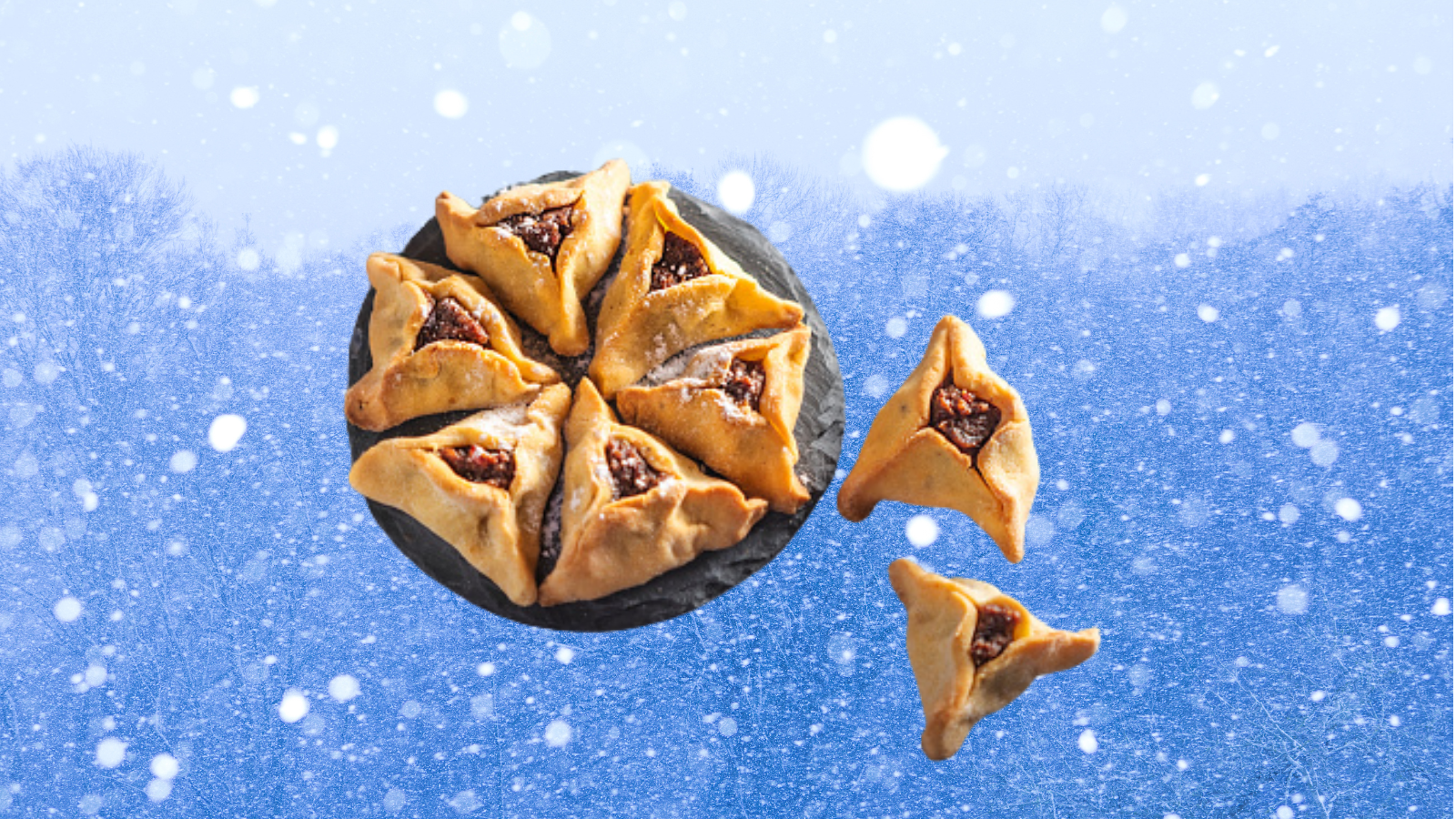As a Jewish person, I may not know a ton about Christmas. But one thing I do know is that almost anything can be a Christmas cookie. While gingerbread men and the classic sugar cookies are the most common choices for Christmas, I’ve seen many more kinds of cakey confections being marketed towards the Yuletide. There are peanut butter blossoms, snickerdoodles, crinkle cookies, cookies with marzipan and cookies with peppermint and cookies with gumdrops. There are even Christmas cookies shaped like logs!
But here’s one kind of cookie that is decidedly not for Christmas: hamantaschen.
For those that need a refresher, hamantaschen are triangular cookies for Purim that Ashkenazi Jews have been making since the Middle Ages. Though they’re traditionally filled with poppy seeds, today hamantaschen come in all kinds of flavors, including fruit jams, Nutella, cheese and more! They are also symbolic, as the triangle shape has been said to represent the Purim villain Haman’s hat, ears or pockets.
And I’m telling you this because even though you might not need to know that hamantaschen aren’t Christmas cookies, clearly there are people who do.
The Nosher celebrates the traditions and recipes that have brought Jews together for centuries. Donate today to keep The Nosher's stories and recipes accessible to all.
Recently, Apple News+ published a round-up of 100 all-time favorite Christmas cookies, where Better Homes & Gardens included a recipe for “Peanut Butter and Jelly Triangles.” If you look at the photos, Jews will see that they look awfully familiar.
Hmm… now what could possibly be another word for triangle cookie? For anyone out there who’s stumped (we’re looking at you, Better Homes & Gardens) Google “triangle cookies.” (Spoiler: You’ll find an array of delicious-looking hamantaschen. Exactly.)
OK, look. I always try to give people the benefit of the doubt. Sometimes we all make well-intentioned mistakes — once as a child I forgot that my cousins weren’t Jewish and mentioned that Santa isn’t real. We’ve all been there!
But it’s a bit hard not to see this incident as cookie-plagiarism when BH&G offered no provenance for their “Peanut Butter and Jelly Triangles.” Folding circular cookie dough into a triangle isn’t a complicated idea, maybe someone’s grandma grew up in a community without a lot of Jews and started making these cookies without realizing that hamantaschen already existed! (The Jewish community itself may have adapted hamantaschen from medieval German mohntaschen, or poppy pockets.) But did that, or a version of that story, actually happen? We’ll never know, because the recipe is absolutely devoid of background or context.
The situation gets even more incriminating when you see under step #5 that Better Homes & Gardens instructs the reader to “Fold dough edges together in three places to form a triangular hat shape, leaving center open.”
Seriously, guys?
We don’t take candy canes and call them Purim mints, so please don’t take our hamantaschen and call them Christmas cookies!



